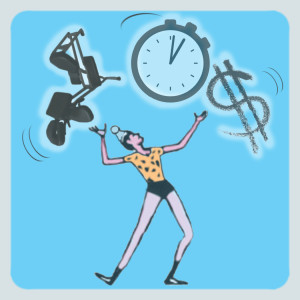 This question recently came in from a long-time chair massage practitioner:
This question recently came in from a long-time chair massage practitioner:
Is there is a calculation for figuring out in advance how many people in a group (office, convention, health fair, etc.) will get a chair massage at a one-time event if it is offered for free? Say the employer or somebody else is paying for the service.
While I know of no formula or rule of thumb for that particular calculation, let’s reframe the question in terms of expectations. Whoever is paying for the massages wants to purchase just enough service so that the people expecting to receive a massage are not disappointed without paying for more massage time than needed.
So, what we are really looking for is both the number of people at the event expecting to get a chair massage and how high or low is their level of expectation. One way to gauge the level of expectation would be by classifying whether the event is open, closed or somewhere in between.
An open event is where there is a virtually unlimited number of people that could possibly get a massage, such as at a convention or street fair where chair massage is used as a traffic builder to get people to stop at a booth. In those situations, the expectation of getting chair massage will be relatively low.
A closed event has a fixed number of potential massage recipients, such as a one-time event in an office that might be used as a reward or incentive for the employees. In that case, the expectation of getting a massage would tend to be high.
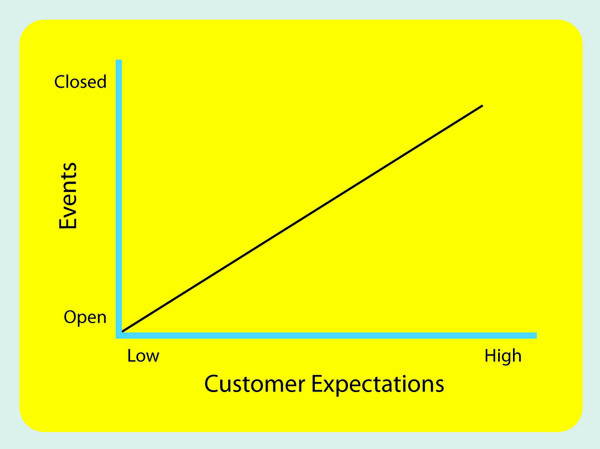 In between open and closed events are other situations, such as health fairs, where people might know that there will be free chair massage, might want one, but understand that there are a limited number of massage slots available, so their disappointment will be tolerable.
In between open and closed events are other situations, such as health fairs, where people might know that there will be free chair massage, might want one, but understand that there are a limited number of massage slots available, so their disappointment will be tolerable.
Open events
The open event is the easiest one to schedule because it is based on the budget of the customer paying for the services. Once the budget is determined, say $700, that number is divided by your hourly rate, say $70 per hour, which gives you the number of practitioner hours they will be paying for, in this example 10 hours. If the event runs for 5 hours, you would make two practitioners available.
The next question is how long are the massage slots that the customer wants for the event: 5-minute, 10-minute, 15-minute, or longer. Dividing the number of practitioner hours by the length of each massage gives you the approximate number of massage slots. It is approximate because you will probably have to use some of those slots for practitioner breaks, if the length of the event is greater than 2.5 to 3 hours. I personally don’t like to do more than 3 hours of massage without a break.
To finish the calculation for this example, say the customer wants 10-minute massage slots. That would be 6 slots an hour times 10 hours for a total of 60 slots. Subtract two 20-minute breaks (4 slots, one for each practitioner) and you could guarantee the customer that you will deliver 54 massages.
While the event organizer may have advertised the availability of free chair massage in advance of the event and some people may be disappointed if they didn’t get a massage, they generally won’t hold it against the sponsor of the event.
Closed events
In a closed event there is typically a fixed number of people to be massaged. For example, a company wants to thank each of its 100 employees with a chair massage for meeting a deadline. Here the calculations get a bit more complicated but, as a starting point, it is useful again to understand the calculation described above.
If each employee gets a massage in a 15-minute slot (4 slots per hour), then 25 practitioner hours will be required at a maximum cost of $1750 (if you are charging $70/hour). Since it is unlikely that all 100 employees will be able to get a massage (some will be sick, on vacation or just won’t want a massage), the next step is to make an estimate with the customer for the number of slots to schedule.
After you explain the calculation above, if there is a long lead time to the event, some customers will want to survey their employee’s interest to come up with a number, others will want to just make their best guess.
In any case, the number of practitioner hours you decide upon is what goes into the contract with the customer and that is how the schedule gets set. If the customer opts for a conservative number of slots and you have the flexibility, you could offer to add more slots if the original amount fills up quickly and they end up having a waiting list. That would have to be spelled out in the contract and agreed upon by the practitioners actually doing the massage.
In closed events there is often an implied guarantee that everyone who wants a massage will get a massage, so ensuring that both the customer and the recipients are happy is challenging. Thus, when you are working off a schedule, make sure that you have the extension number of each person scheduled in case you have to call to remind them of their appointment. If, on the day of the event, someone is sick, you can also offer to do double sessions if the event coordinator cannot otherwise fill in the slot.
Semi-closed events
A corporate health fair is a typical semi-closed event where generally a fixed number of people are expected but there is no guarantee of everyone getting a massage.
As in the first two cases, after you explain the basic calculation, you can help the customer to decide how many slots and what slot length they can purchase with their budget constraints.
A final word about scheduling
Customers like to get what they paid for, which means they generally don’t like to see practitioners standing around doing nothing. This can be tricky in situations where there is no pre-scheduling of the massage slots and recipients get taken on a first-come, first-served basis (often involving a clipboard).
In those situations, having some flexibility in the length of the massage is helpful. For example, often things are slow at the beginning of the event. That is a good time to give longer chair massages. As the number of people in line waiting for a massage grows, the practitioners can begin shortening their massages until the minimum slot-time agreed upon is reached. The goal should be to always have someone in every chair getting a massage, even if it is the practitioners working on each other.
Meeting expectations
Understanding the expectations of the customer and the massage recipients is key to repeat business and positive recommendations. Remember, customers come to you because you are the expert. Helping to clarify the decisions they have to make is step one. Now delivering a great massage is up to you.
A special shout out to Tom Darilek and Debra Rilea for their help in framing this question and response.

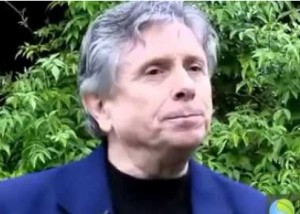
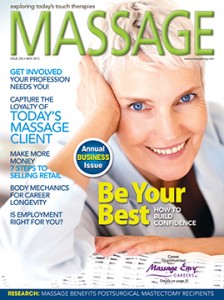 This article originally appeared in the May 2013 issue of Massage Magazine. The focus of the issue was on the business of massage and I was asked to respond to the question:
This article originally appeared in the May 2013 issue of Massage Magazine. The focus of the issue was on the business of massage and I was asked to respond to the question: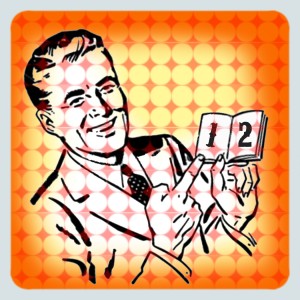 Outfitted with education, experience and selling points (see related article:
Outfitted with education, experience and selling points (see related article: 
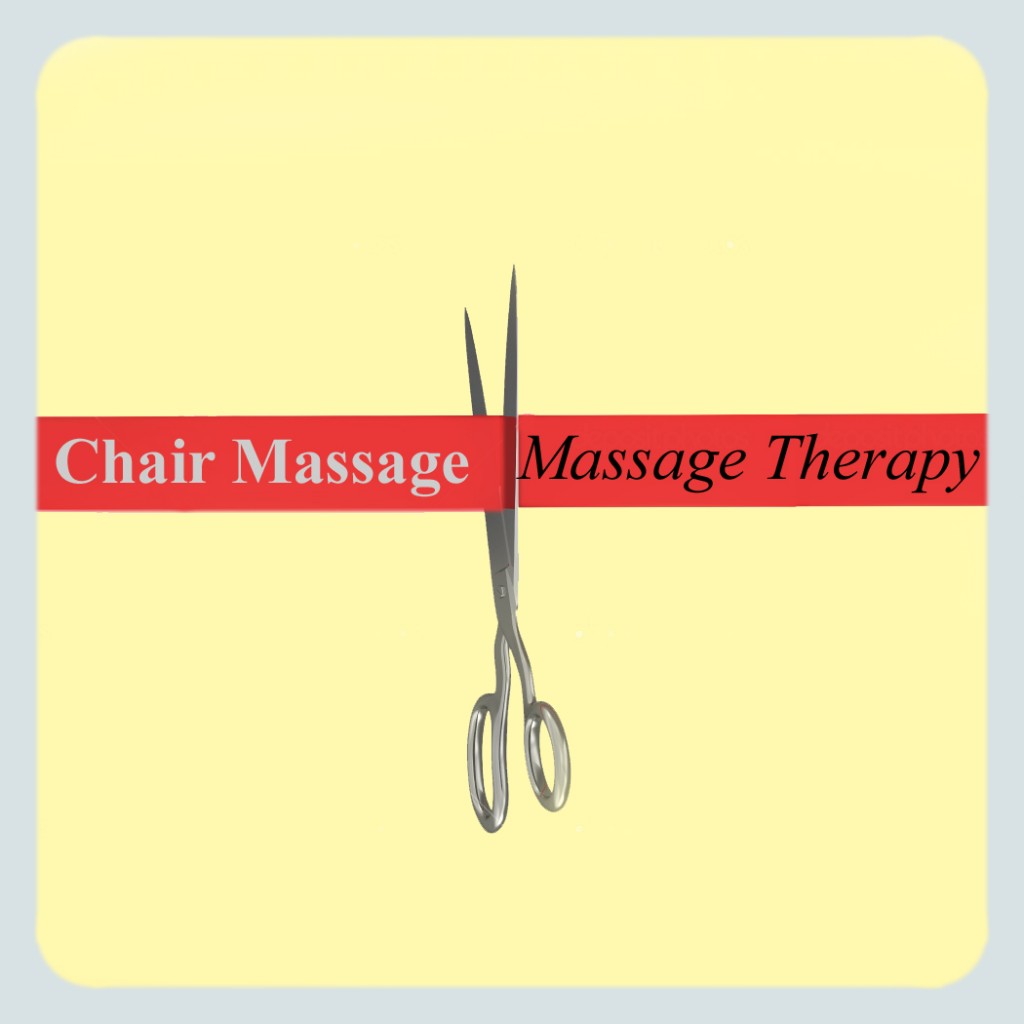 There is a successful company in Australia,
There is a successful company in Australia, 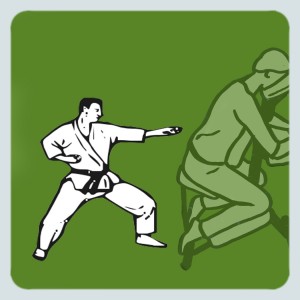 Whenever customers sit in my massage chair, I know that their subjective experience of my touch will be the result of at least four factors:
Whenever customers sit in my massage chair, I know that their subjective experience of my touch will be the result of at least four factors: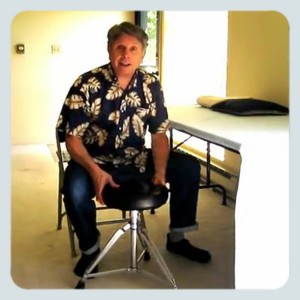
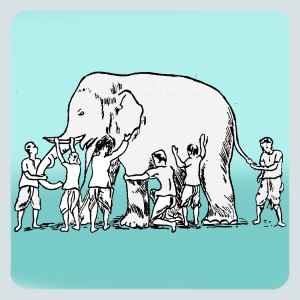 Like the classic tale of the
Like the classic tale of the 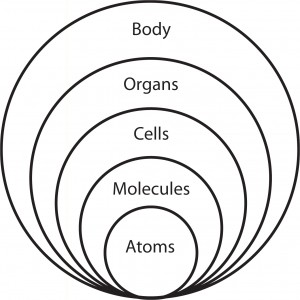 For example, a human holon is composed of many organ parts. Each organ holon is composed of cells; each cell is composed of molecules; molecules are composed of atoms; atoms of particles and so on. This article is a holarchy starting with letters that make words that make sentences that make paragraphs that make the article.
For example, a human holon is composed of many organ parts. Each organ holon is composed of cells; each cell is composed of molecules; molecules are composed of atoms; atoms of particles and so on. This article is a holarchy starting with letters that make words that make sentences that make paragraphs that make the article.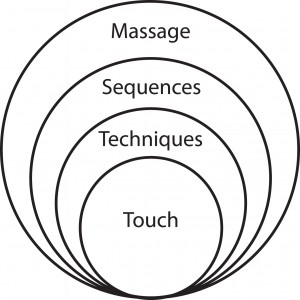 A complete professional massage holon is composed of a series of sequences or protocols applied to various parts of the body. Which sequences are selected (location) and how much time we spend on each part and in what order (choreography) has a lot to do with how we define any particular massage.
A complete professional massage holon is composed of a series of sequences or protocols applied to various parts of the body. Which sequences are selected (location) and how much time we spend on each part and in what order (choreography) has a lot to do with how we define any particular massage.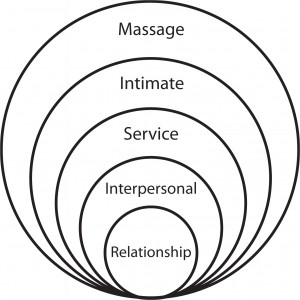 One subjective (interior) analysis of another holarchy inherent to massage might point to the fact that every massage is fundamentally a relationship holon.
One subjective (interior) analysis of another holarchy inherent to massage might point to the fact that every massage is fundamentally a relationship holon.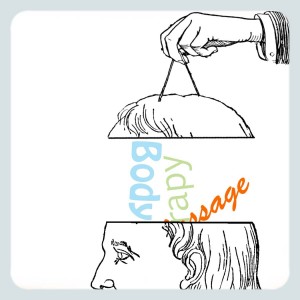 Have you every wondered why the National Certification Board of Therapeutic Massage and Bodywork (NCBTMB) has such an awkward name? What’s with that business of “Therapeutic Massage and Bodywork?” Couldn’t they have stopped after the word “Massage?”
Have you every wondered why the National Certification Board of Therapeutic Massage and Bodywork (NCBTMB) has such an awkward name? What’s with that business of “Therapeutic Massage and Bodywork?” Couldn’t they have stopped after the word “Massage?”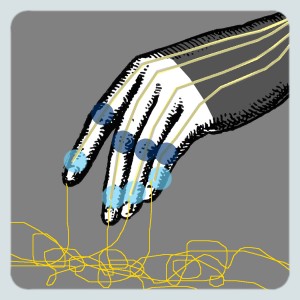 Last week I saw a
Last week I saw a 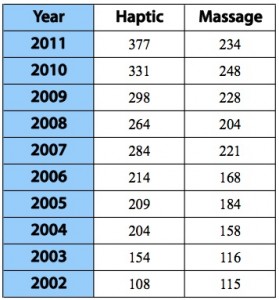
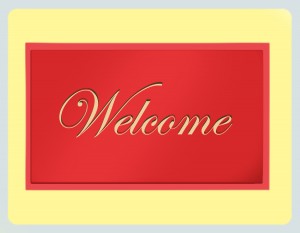 Whenever I am in an unfamiliar room, full of people I don’t know, my shy parts come out. I feel isolated, vulnerable and fearful and immediately begin looking for the nearest exit.
Whenever I am in an unfamiliar room, full of people I don’t know, my shy parts come out. I feel isolated, vulnerable and fearful and immediately begin looking for the nearest exit.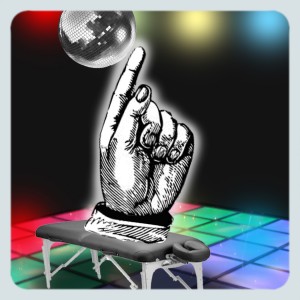 When John Doe #1 recently filed suit over John Travolta’s wandering hands in the massage room my immediate reaction was, “Well, there goes the first shoe.”
When John Doe #1 recently filed suit over John Travolta’s wandering hands in the massage room my immediate reaction was, “Well, there goes the first shoe.”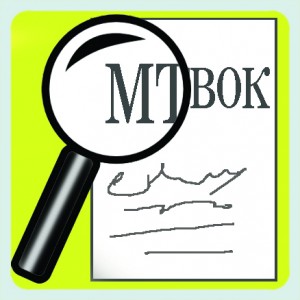 The purpose of the MTBOK Project is to define the scope of practice for massage professionals and the entry-level knowledge, skills and abilities (KSA) necessary to responsibly perform massage therapy. It is intended to be a living document that is constantly modified and updated as information, understanding and perspectives change.
The purpose of the MTBOK Project is to define the scope of practice for massage professionals and the entry-level knowledge, skills and abilities (KSA) necessary to responsibly perform massage therapy. It is intended to be a living document that is constantly modified and updated as information, understanding and perspectives change. Where the report fails is that it doesn’t make clear that the subset of bodywork that includes massage can be further subdivided, only one category of which is massage therapy. That is to say, while all massage therapy is massage, not all massage is massage therapy [See
Where the report fails is that it doesn’t make clear that the subset of bodywork that includes massage can be further subdivided, only one category of which is massage therapy. That is to say, while all massage therapy is massage, not all massage is massage therapy [See 
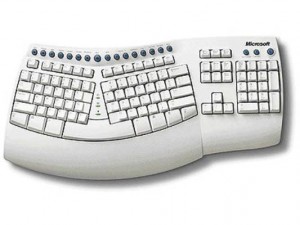
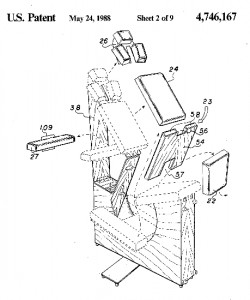 Designing and building a massage chair is far more complicated than creating a massage table. Massage chairs have four surfaces on four different planes that need to fit to the customer’s face, chest, shins and seat, rather than the one surface required for a massage table. Each surface must be adjustable enough to accommodate a wide range of lengths and weights and the chair itself should be adjustable for tall and short practitioners. Add to that the requirement that the chair must fold into a transportable package that is lighter and smaller than the typical massage table and you end up with a major engineering challenge.
Designing and building a massage chair is far more complicated than creating a massage table. Massage chairs have four surfaces on four different planes that need to fit to the customer’s face, chest, shins and seat, rather than the one surface required for a massage table. Each surface must be adjustable enough to accommodate a wide range of lengths and weights and the chair itself should be adjustable for tall and short practitioners. Add to that the requirement that the chair must fold into a transportable package that is lighter and smaller than the typical massage table and you end up with a major engineering challenge.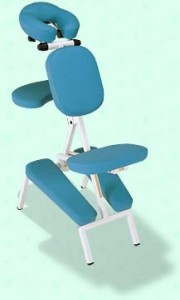 The reason for its popularity is the simplicity of the design, which made it relatively easy to manufacture and eventually, easy to copy. Scott sold his design to a manufacturer in Montana called Golden Ratio which named the chair the QuickLite. Golden Ratio neglected to get any patent protection and by the mid 1990s multiple versions were being made throughout North America, Europe and Australia.
The reason for its popularity is the simplicity of the design, which made it relatively easy to manufacture and eventually, easy to copy. Scott sold his design to a manufacturer in Montana called Golden Ratio which named the chair the QuickLite. Golden Ratio neglected to get any patent protection and by the mid 1990s multiple versions were being made throughout North America, Europe and Australia.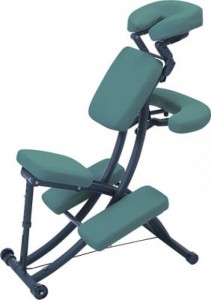 The Portal Pro chair that Linda sketched was defined by the unique cable system that linked the front and back leg braces providing an entirely new level of support and independent adjustability for the face, leg, shin and seat pads.
The Portal Pro chair that Linda sketched was defined by the unique cable system that linked the front and back leg braces providing an entirely new level of support and independent adjustability for the face, leg, shin and seat pads.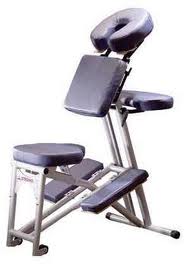 The great innovation of the Lloyd frame was the elimination of any cabling holding the legs together. That meant that the seat height/angle and chest pad height/angle could be adjusted independently. In addition, the back legs can be raised or lowered for the height of the seat and comfort of the practitioners without changing any angles or requiring adjustments for the customer.
The great innovation of the Lloyd frame was the elimination of any cabling holding the legs together. That meant that the seat height/angle and chest pad height/angle could be adjusted independently. In addition, the back legs can be raised or lowered for the height of the seat and comfort of the practitioners without changing any angles or requiring adjustments for the customer.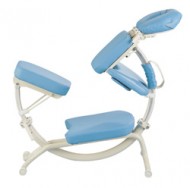 If the Riach Design was based on an “X,” the Gillotti Design was based on an “O.” The frame is built on three curved, nesting tubes that telescope in and out of each other allowing the chest pad and face cradle attached to one end to move from a totally horizontal to a totally vertical position. On the other end of the frame the seat can perform the same maneuver.
If the Riach Design was based on an “X,” the Gillotti Design was based on an “O.” The frame is built on three curved, nesting tubes that telescope in and out of each other allowing the chest pad and face cradle attached to one end to move from a totally horizontal to a totally vertical position. On the other end of the frame the seat can perform the same maneuver.
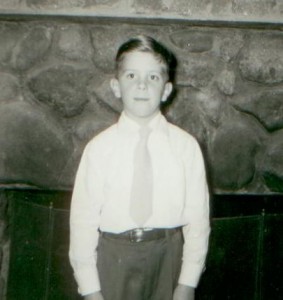
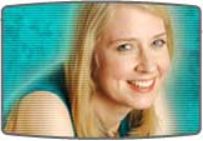 I was thinking of this tendency to pathologize life as I was re-reading an article by
I was thinking of this tendency to pathologize life as I was re-reading an article by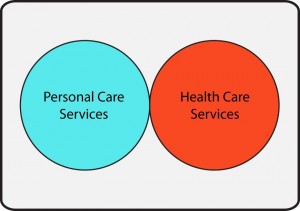 These two domains were easily distinguished from one another both by terminology (customers vs. patients) and by intention (relaxation vs. treatment) and there was generally little confusion or overlap.
These two domains were easily distinguished from one another both by terminology (customers vs. patients) and by intention (relaxation vs. treatment) and there was generally little confusion or overlap.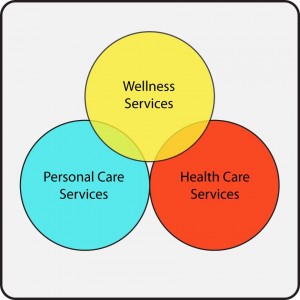
 While I am a big believer in making every moment a fitness moment (see
While I am a big believer in making every moment a fitness moment (see  Note: This is the fourth and last of a series of articles called “C”-ing Your Way to Success about the value of
Note: This is the fourth and last of a series of articles called “C”-ing Your Way to Success about the value of 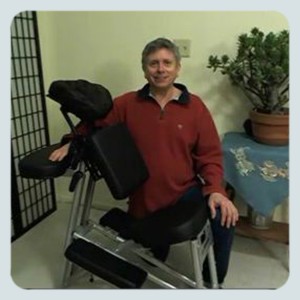
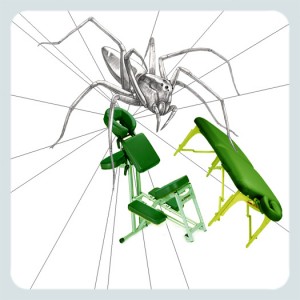 In the world wide web, “stickiness” refers to how long you can keep a user on your website or how often you can get them to return. It is a measure of user engagement and loyalty.
In the world wide web, “stickiness” refers to how long you can keep a user on your website or how often you can get them to return. It is a measure of user engagement and loyalty.

